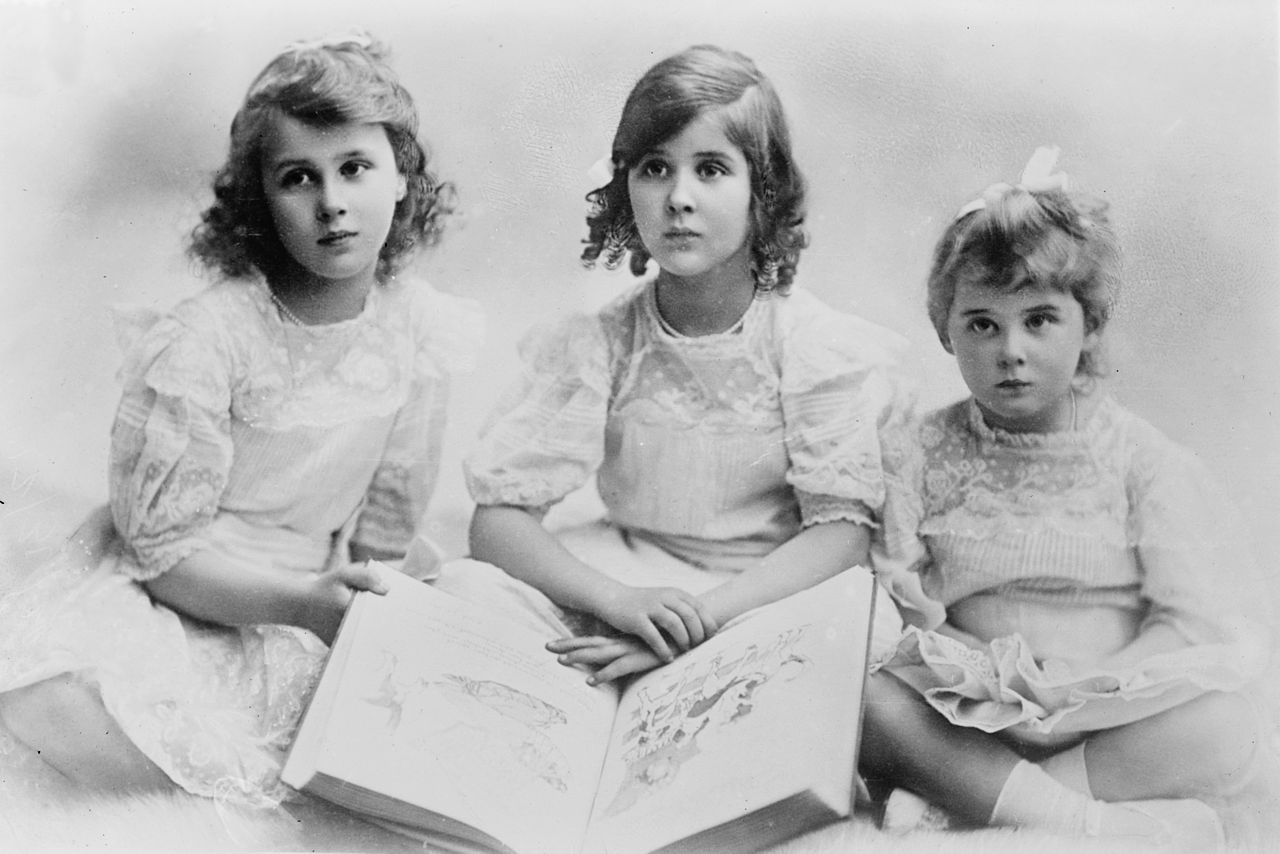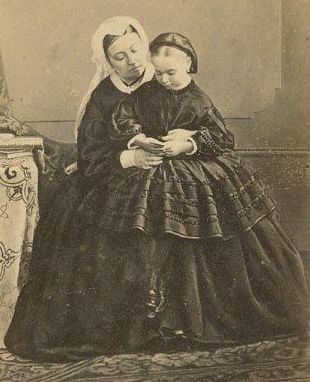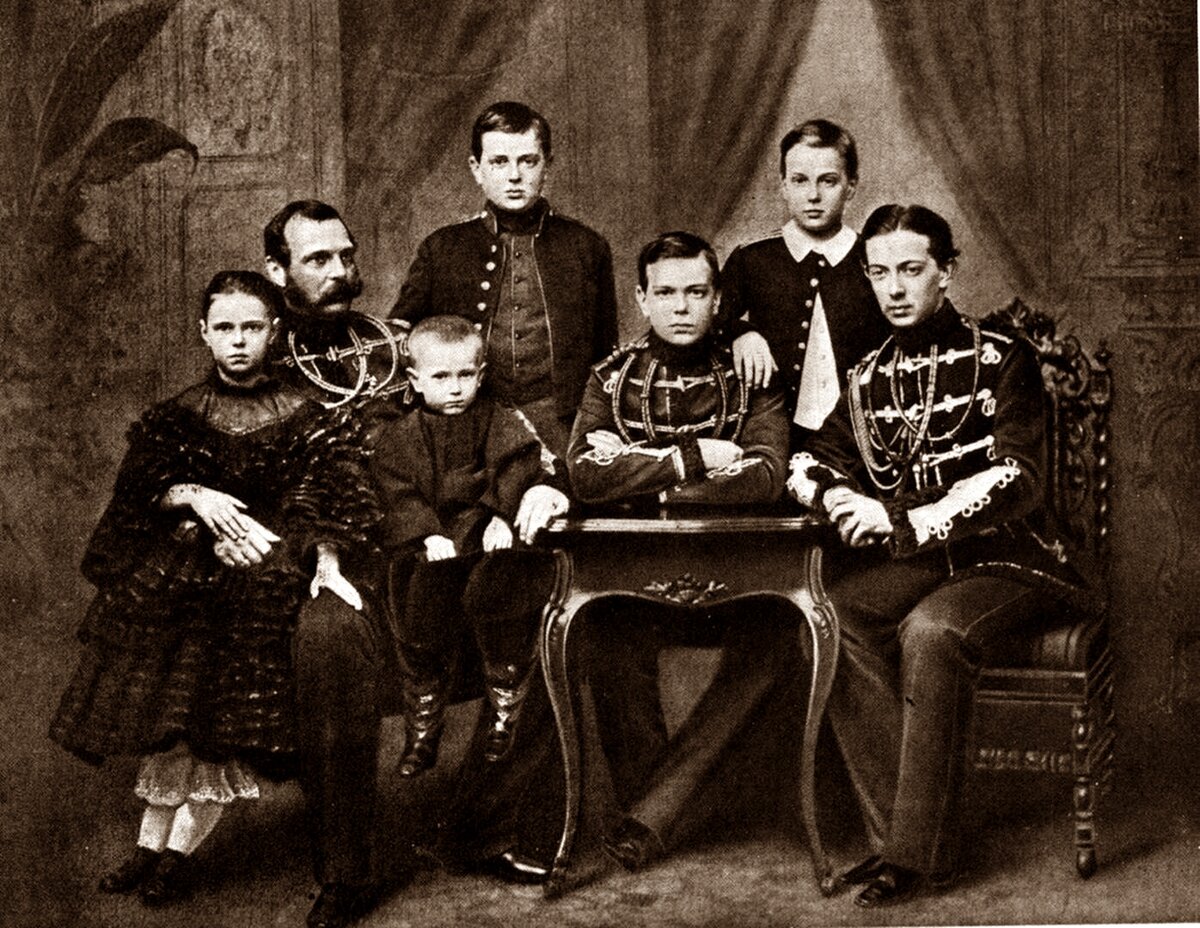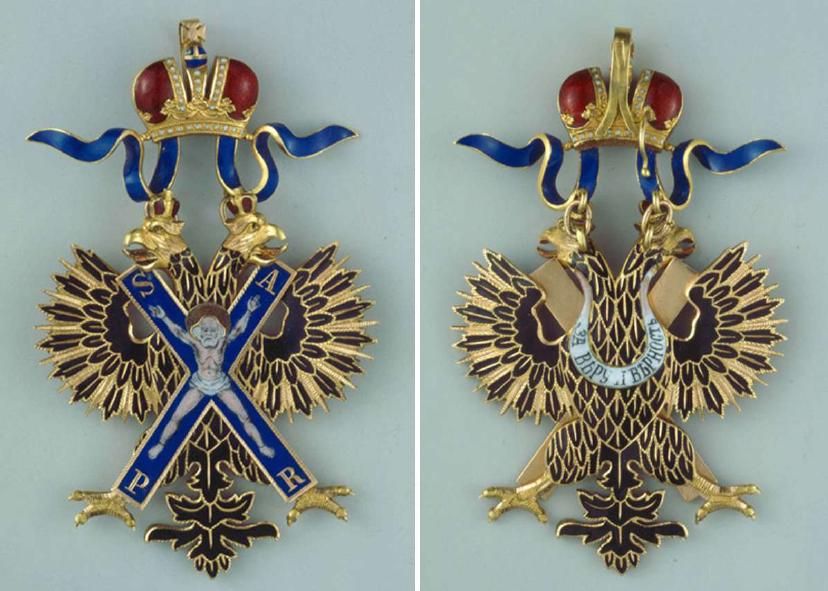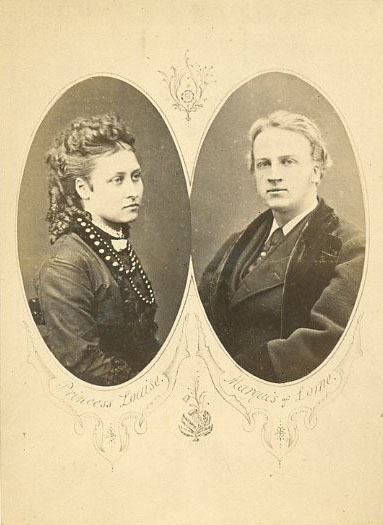by Susan Flantzer © Unofficial Royalty 2019

Photo Credit – The wedding of Prince Henry, Duke of Gloucester and Princess Alice, Duchess of Gloucester by and after Vandyk, hand-coloured bromide print, 6 November 1935, NPG x134883 © National Portrait Gallery, London
Prince Henry, Duke of Gloucester and Lady Alice Montagu Douglas Scott were married on November 6, 1935, at the Private Chapel in Buckingham Palace in London, England. The wedding was originally set to be held at Westminster Abbey but the wedding venue was changed after the death of the bride’s father. John Montagu Douglas Scott, 7th Duke of Buccleuch died from cancer at Bowhill House in Selkirkshire, Borders, Scotland on October 19, 1935, less than three weeks before the wedding date. Because of the circumstances, it was deemed more appropriate to have the wedding at the Private Chapel at Buckingham Palace.
- Unofficial Royalty: Private Chapel, Buckingham Palace in London, England
- YouTube: The Royal Wedding – Duke And Duchess Of Gloucester’s Wedding
Henry’s Early Life

Henry with his siblings in 1912: 1912:(Front row) John, Mary and George (Back row) Albert, Henry and Edward; Credit – Wikipedia
Prince Henry was the third son of the five sons and fourth of the six children of George, Duke of York (later King George V) and Victoria Mary of Teck (later Queen Mary). He was born on March 31, 1900, at York Cottage on the Sandringham estate in Norfolk, England. Henry attended St. Peter’s Court School in Kent and then Eton College near Windsor which was unusual for a royal child at that time. He also attended the Royal Military College at Sandhurst and Trinity College, Cambridge. Henry had a military career in the British Army and served with The King’s Royal Rifle Corps and the 10th Royal Hussars. On his 28th birthday, his father King George V created him Duke of Gloucester.
For more information, see Unofficial Royalty: Prince Henry, Duke of Gloucester
Alice’s Early Life

Mary Theresa (née Montagu-Douglas-Scott), Lady Burghley; Princess Alice, Duchess of Gloucester by Lafayette bromide print, circa 1910 NPG Ax29354 © National Portrait Gallery, London
Lady Alice Montagu Douglas Scott was born on December 25, 1901, at Montagu House in Whitehall, London, England. She was the third daughter and the fifth of eight children of John Montagu Douglas Scott, 7th Duke of Buccleuch and 9th Duke of Queensberry and Lady Margaret Bridgeman, daughter of George Bridgeman, 4th Earl of Bradford. Alice’s father was the largest landowner in Scotland, and she was a descendant of King Charles II through an illegitimate line. Alice grew up in her family’s country homes home, Boughton House in Northamptonshire, England, Drumlanrig Castle in Dumfries and Galloway, Scotland and Bowhill House near Selkirk, Scotland. She attended St. James’ School for Girls, in West Malvern, Worcestershire, England.
For more information, see Unofficial Royalty: Lady Alice Montagu Douglas Scott, Duchess of Gloucester
The Engagement
Embed from Getty Images
September 2, 1935: A royal gathering at Balmoral Castle on the occasion of the Duke of Gloucester’s engagement to Lady Alice Montagu Douglas Scott. From left to right: The Duchess of Buccleuch (Alice’s mother), King George V, Lady Alice Montagu Douglas Scott, Prince Henry, Duke of Gloucester and Queen Mary
Both Prince Henry and Lady Alice were older than usual when they married. Henry was 35-years-old and Alice was nearly 34-years-old. Henry’s eldest brother David (the future King Edward VIII and later Duke of Windsor) was also not married and his parents had given up hope. David encouraged Henry’s bachelorhood because then he would feel more comfortable about not being the only single sibling. He also encouraged Henry’s travels which kept him out of any serious relationship. In the early 1930s, most of Henry’s friends thought he had his eye on Lady Alice and that Henry would have courted her if he would settle down.
Pressured by his parents, Prince Henry decided it was time to settle down and started to seriously court Lady Alice, sister of one of his best friends Lord William Montagu Douglas Scott. In May 1935, after an extended stay with an uncle in Kenya, Alice had returned home due to her father’s illness and the couple started to see quite a lot of each other. Henry and Alice were staying at Windsor Castle with Queen Mary while King George V, who was ill, was staying at Sandringham. Henry wrote to his father: “I saw Alice Scott several times & met her out riding each morning. I think Mama liked her.” George V replied quickly to his son, a surprise considering his health situation, “Mama thought Alice Scott very nice, glad you saw something of her at Windsor.”
While walking his dogs with Alice at Richmond Park, Henry finally proposed. Alice later wrote in her memoirs: “There was no formal declaration on his part, I think he just muttered it as an aside…nor was there any doubt about my acceptance. I was thirty-four, so I had had a very good innings. Apart from my great happiness in getting married, I felt too that it was time I did something useful with my life.”
King George V wrote to Alice’s father: “I must send you a line to say how delighted the Queen and I are that my son Harry is engaged to be married to your third daughter…Our families have known each other for many generations now, that it gives me great pleasure to think that they will be more closely connected still.”
Sadly, Alice’s father would not live to see her wedding day and Henry’s father would die ten weeks after the wedding.
The Wedding Site
The Private Chapel at Buckingham Palace was created by Queen Victoria and Prince Albert in 1844 in what had originally been a conservatory. Queen Victoria was delighted with the result, which had been supervised by Prince Albert, and described it as “beautiful” and “exceedingly restrained”. During World War II, the Private Chapel was damaged by bombing and was later incorporated into The Queen’s Gallery. In 1889, the wedding of Henry’s aunt Louise, Princess Royal, Duchess of Fife was the first wedding to take place at the Private Chapel in Buckingham Palace.
Bridesmaids and Supporters
Embed from Getty Images
Left to right, back row: Clare Phipps, The Duke of York (later George VI), Lady Elizabeth Montagu Douglas Scott, the groom and the bride, Lady Angela Montagu Douglas Scott, The Prince of Wales (later Edward VIII), and Moyra Montagu Douglas Scott. Left to right, front row: Lady Mary Cambridge, Princess Elizabeth (later Queen Elizabeth II), Princess Margaret of York and Anne Hawkins
Supporters:
Henry’s two eldest brothers The Prince of Wales (the future King Edward VIII, later the Duke of Windsor) and The Duke of York (the future King George VI) served as his supporters.
Bridesmaids:
- Princess Elizabeth of York, the groom’s niece, the future Queen Elizabeth II
- Princess Margaret of York, the groom’s niece, married Antony Armstrong-Jones, later 1st Earl of Snowdon
- Lady Mary Cambridge, the groom’s first cousin once removed, daughter of George Cambridge, 2nd Marquess of Cambridge (nephew of Queen Mary), married Peter Whitley
- Lady Angela Montagu Douglas Scott, the bride’s sister, married Vice-Admiral Sir Peter Dawnay
- Lady Elizabeth Montagu Douglas Scott, the bride’s niece, daughter of Walter Montagu Douglas Scott, 8th Duke of Buccleuch, married Hugh Percy, 10th Duke of Northumberland
- Anne Hawkins, the bride’s niece, daughter of Lady Margaret Montagu Douglas Scott and Admiral Sir Geoffrey Hawkins, married Commander Michael Edward St. Quintin Wall
- Clare Phipps, the bride’s niece, daughter of Lady Sybil Montagu Douglas Scott and Charles Phipps, married David Hadow
- Moyra Montagu Douglas Scott, the bride’s first cousin, daughter of Lord Francis Montagu Douglas Scott, married Colonel David Smiley
Wedding Attire

‘The Royal Wedding’ (Prince Henry, Duke of Gloucester; Princess Alice, Duchess of Gloucester) by Vandyk, published by J. Beagles & Co bromide postcard print, 6 November 1935 NPG x197272 © National Portrait Gallery, London
The groom looked splendid in the blue and gold uniform of the 10th Royal Hussars with the sash and star of the Order of the Garter and black-topped boots. The Prince of Wales wore the uniform of a colonel of the Welsh Guard and the Duke of York wore the uniform of a colonel of the Scots Guards. The bridesmaids wore simple satin dresses with golden satin sashes.
Alice’s wedding dress was designed by Norman Hartnell, the first of many designs for the women of the British royal family. What was most striking about Alice’s dress was the color. It was not the traditional white but pink. Hartnell described the color as “glimmer of pearl” while others called it “blush pink” or simply “blush-colored.” Alice wanted a simple dress and Hartnell did as he was told. The dress was a modest, simple design, with long, narrow sleeves and a high neckline draped into a nosegay of artificial orange-blossom. The cathedral train was appropriate for the intended setting, Westminster Abbey.
Alice wore a pearl necklace, pearl stud earrings. Her tulle veil was held in place by a crystal headdress specially made for the day, instead of a tiara. The bridal bouquet was of white roses and lilies of the valley with a sprig of myrtle grown from a sprig taken from Queen Victoria’s wedding bouquet. Every royal bride has since carried a sprig of the myrtle for good luck.
The Wedding
Embed from Getty Images
The bride on the way to Buckingham Palace
Henry had breakfast with his parents and from the windows of the palace, they saw that the crowds were already lined up ten deep. Crowds also gathered near Alice’s family home in London, in Grosvenor Place hoping to get a glimpse of her.
The Private Chapel was decorated with hundreds of white flowers. Two gold vases full of lilies stood at the altar. The communion rails had garlands made from lilies, white heather, orange blossoms, roses, and narcissus. Flowers six feet high decorated the pillars.
Waiting in the Private Chapel were about 120 guests, far fewer than there would have been in Westminster Abbey. King George V and Queen Mary (the groom’s parents), Queen Maud of Norway (the groom’s aunt), King George II of Greece (the groom’s second cousin), the Duke of Kent (the groom’s brother), the Duchess of York (the groom’s sister-in-law, the future Queen Elizabeth, wife of King George VI) and The Princess Royal (the groom’s sister Mary) sat on the right side of the altar. Behind them sat the three surviving children of Queen Victoria: Arthur, Duke of Connaught, Princess Louise, and Princess Beatrice, along with Crown Prince Gustaf Adolf of Sweden (the future King Gustaf VI Adolf), and Henry Lascelles, 6th Earl of Harewood (husband of The Princess Royal) and his two sons (the groom’s nephews). On the opposite side sat Walter Montagu Douglas Scott, 8th Duke of Buccleuch and his wife Vreda (the bride’s brother and sister-in-law) and Margaret Montagu Douglas Scott, Dowager Duchess of Buccleuch (the bride’s mother). Behind them sat other relatives and members of the Cabinet.
Alice accompanied by her brother Walter Montagu Douglas Scott, 8th Duke of Buccleuch, taking the place of his recently deceased father, rode in the Glass Coach to Buckingham Palace. After arriving at the palace, they met the bridesmaids in the Drawing Room and walked in a procession to the Private Chapel where the groom was waiting with his two eldest brothers.
The service was conducted by Cosmo Gordon Lang, Archbishop of Canterbury, Arthur Winnington-Ingram, Bishop of London, and Arthur Maclean, Primus of the Scottish Episcopal Church. After the hymn “Praise, My Soul, the King of Heaven” was sung, the Archbishop of Canterbury led the couple through their wedding vows. The Primus of the Scottish Episcopal Church prayed for God’s blessing upon the couple. Then the Archbishop of Canterbury gave a short address, followed by his benediction. While Felix Mendelssohn’s “Wedding March” was played, the newlyweds proceeded to the adjacent household drawing-room to sign the wedding register.
After the Wedding
Embed from Getty Images
Left to right: Princess Elizabeth, Princess Margaret, King George V, Queen Maud of Norway (the king’s sister), The Duke Of Gloucester, The Duchess of Gloucester, and Queen Mary
After the signing of the wedding register, the royal party proceeded to the balcony of Buckingham Palace. Tremendous cheers greeted the newlyweds. When King George V and Queen Mary appeared the cheers were renewed. The crowd was especially delighted at the appearance of Princess Elizabeth and Princess Margaret. The new Duchess of Gloucester waved repeatedly to the crowd before leaving the balcony. Queen Maud, The Princess Royal, the Duchess of York, and other members of the royal family also appeared on the balcony.
The wedding breakfast was very simple. The guests were seated at twelve round tables decorated with gold vases filled with roses, chrysanthemums, heather, and mimosa. The bride and groom sat with King George V, Queen Mary, and Princess Elizabeth of York. King George V made a short toast to the health of the bride and groom.
After the wedding breakfast, the bride and groom were taken by carriage to St. Pancras Station in London. Along the way, the streets were crowded with well-wishers. The train took them to Kettering, Northamptonshire, England where they spent their honeymoon at Boughton House, one of the seats of the Duke of Buccleuch.

Boughton House; Credit – By Euan Myles – Euan Myles Photography, CC BY-SA 4.0, https://commons.w.ikimedia.org/w/index.php?curid=52799330
This article is the intellectual property of Unofficial Royalty and is NOT TO BE COPIED, EDITED, OR POSTED IN ANY FORM ON ANOTHER WEBSITE under any circumstances. It is permissible to use a link that directs to Unofficial Royalty.
Works Cited
- Bowles, Hamish. (2018). The Royal Bride Who Wore Pink. [online] Vogue. Available at: https://www.vogue.com/article/the-royal-bride-who-wore-pink-princess-alice-duchess-of-gloucester [Accessed 27 Oct. 2019].
- En.wikipedia.org. (2019). Wedding dress of Lady Alice Montagu Douglas Scott. [online] Available at: https://en.wikipedia.org/wiki/Wedding_dress_of_Lady_Alice_Montagu_Douglas_Scott [Accessed 27 Oct. 2019].
- Flantzer, S. (2014). Princess Alice, Duchess of Gloucester. [online] Unofficial Royalty. Available at: https://www.unofficialroyalty.com/princess-alice-duchess-of-gloucester/ [Accessed 27 Oct. 2019].
- Flantzer, Susan. (2013). Prince Henry, Duke of Gloucester. [online] Unofficial Royalty. Available at: https://www.unofficialroyalty.com/june-10-daily-featured-royal-date/ [Accessed 27 Oct. 2019].
- Hough, Richard. (1991). Born Royal – The Lives and Loves of the Young Windsors. Leicester: Ulverscroft.
- Nytimes.com. (1935). WEDDING BELLS FOR ANOTHER ROYAL SON; Duke of Gloucester’s Marriage Leaves the Prince of Wales Alone Unwed ANOTHER ROYAL SON TO WED The Marriage of the Duke of Gloucester Will Leave the Prince of Wales Alone a Bachelor. [online] Available at: https://www.nytimes.com/1935/11/03/archives/wedding-bells-for-another-royal-son-duke-of-gloucesters-marriage.html?ref=oembed [Accessed 27 Oct. 2019].
- Orderofsplendor.blogspot.com. (2011). Wedding Wednesday: Alice, Duchess of Gloucester’s Gown. [online] Available at: http://orderofsplendor.blogspot.com/2011/11/wedding-wednesday-alice-duchess-of.html [Accessed 27 Oct. 2019].
- Pope-Hennessy, James. (1959). Queen Mary, 1867-1953. New York: Alfred A. Knopf, Inc.
- Trove. (1935). ROYAL WEDDING – QUIET CEREMONY IN PALACE CHAPEL LONDON REGRETS LACK OF PAGEANTRY CROWDS CHEER HAPPY COUPLE LONDON, Nov. 6. – The Argus (Melbourne, Vic. : 1848 – 1957) – 7 Nov 1935. [online] Available at: https://trove.nla.gov.au/newspaper/article/11852400 [Accessed 27 Oct. 2019].


